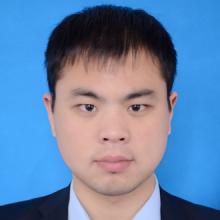Manipulation and separation of thermal and electrical currents at mesoscopic scales are of fundamental interest and have technological impact on high-performance thermoelectric devices and other nanoscale machines for information technology and other disciplines [1-4].
The ability to convert various forms of heat into useful work are of potential values for noise reduction, nanoscale cooling, and controlled electrical signals. One particular important direction is to convert the electromagnetic energy from microwave quantum cavities to electrical work, or use such energy to control electron motion in mesoscopic systems.
In my work, in collaboration with Prof. Manas Kulkarni (ICTS-TIFR) and Jian-Hua Jiang (Soochow University, China), we investigate the inelastic thermoelectric transport with strong coupling to microwaves residing inside the cavity. The strong coupling or even ultra-strong coupling regimes provide a cutting-edge frontier for high performance thermoelectrics which might reach very high efficiency and power.
By employing techniques, such as the non-equilibrium Green’s function approach, we study the quantum thermoelectric transport through double quantum-dots coupled to microwaves in a cavity. In the linear-response regime, the thermopower and figure of merit are calculated to study the thermoelectric performance. They are optimized through tuning various parameters such as quantum-dot energy and electron-photon coupling to obtain significant energy efficiency and output power. In the nonlinear regime, the device can serve as thermoelectric rectifiers and transistors, and enhances the efficiency and power in a nontrivial way.
- O. Entin-Wohlman, Y. Imry, and A. Aharony, Physical Review B 82, 115314 (2010).
- J. Ren, J.-X. Zhu, J. E. Gubernatis, C. Wang, and B. Li, Physical Review B 85, 155443 (2012).
- J.-H. Jiang, O. Entin-Wohlman, and Y. Imry, Physical Review B 85, 075412 (2012).
- J.-H. Jiang, M. Kulkarni, D. Segal, and Y. Imry, Physical Review B 92, 045309 (2015).



 qq
qq com
com